Support for international users and multiple languages in the new Office
Julian Parish is the Senior Product Planner in Office International, responsible for coordinating language and market strategy across Office products and services. He is based at Microsoft’s EMEA head office in Paris, France.
We have made major new investments in the new Office to support international users who work in languages other than English. Three new languages have been fully localized for the first time and Language Interface Packs added in 13 more. The range of languages supported in Office 365 and in Office Mobile has also been greatly extended. For the many international users who need to consume or create content in more than one language we are introducing new ways to access Office proofing tools in additional languages.
Support for our international users
We know how important it is for you to feel comfortable using our applications and to be as productive as possible. A key part of that is to use Office in a language you know well or use regularly in your work. We are continuously reviewing the languages we support. As the economies in emerging markets grow further and more people come online around the world, we need to take Office into new languages. In fact, in the past ten years we have increased the number of localized Office languages by over 50%. In the new Office we are therefore investing in two major ways.
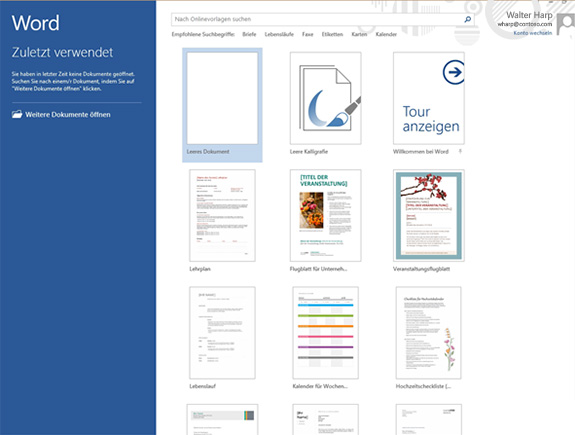
Word 2013 templates in German
New fully localized languages
First, we are adding new fully localized versions of Office in three Asian languages: Indonesian, Malay and Vietnamese. This means that the User Interface (UI) and User Assistance (UA) content will be available in these languages across Office–including Lync–and as a Language Pack for SharePoint Server 2013. These new language versions will be available to consumers to buy in 2013 and to enterprise customers as part of our Multilingual User Interface or MUI packs. Alongside the Office Client a dedicated Office.com site in the local language will provide more help and tools for making the most of the new Office.
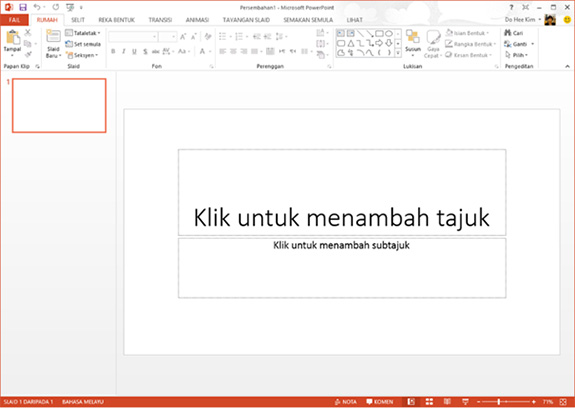
PowerPoint 2013 in Malay
Language Interface Packs
Secondly, and working closely with our partners in Windows, we are adding thirteen completely new languages as Language Interface Packs to the new Office. These packs–or LIPs for short–provide a localized User Interface (UI) for the most frequently used Office Client applications: Excel, OneNote, Outlook, PowerPoint and Word. They run on Windows 7 and Windows 8 and will be available in 2013 as free downloads; they can be quickly installed on top of Office 2013 in a base language such as English. The same languages can also be used as Office Web Applications in conjunction with Microsoft SkyDrive. Together, these solutions will make the new Office available to speakers of national languages in markets which are experiencing rapid PC growth (in Africa and Asia, for example) and of additional languages that are preferred by groups of customers in developed markets.
These are the LIP languages we are adding in the new Office:
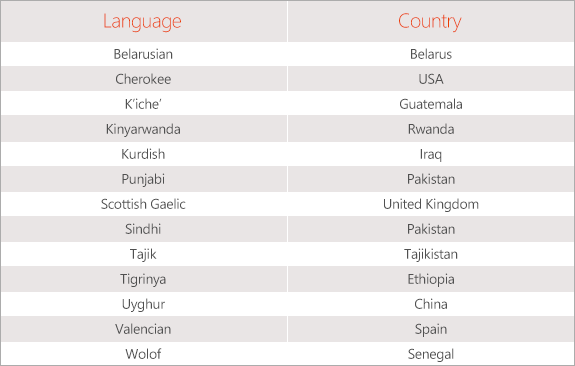
More than 100 languages worldwide
With these additional investments, the new Office will be available in 106 languages as either a fully localized language or Language Interface Pack. Taken together, these languages are spoken as the first language of more than 4.5 billion people across the globe. They cover at least one official language in nearly every country in the world.
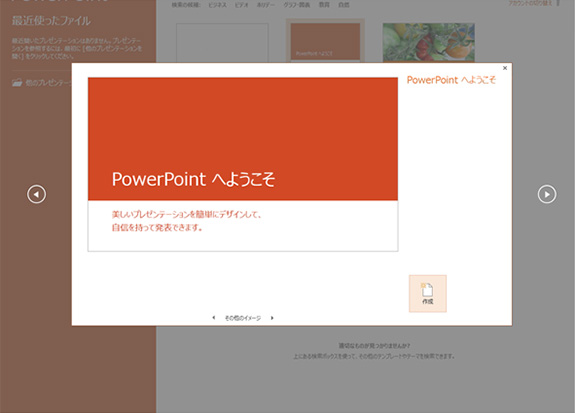
PowerPoint 2013 in Japanese
Doing more in existing Office languages
Changes to the international support in the new Office are not limited to these extra languages. As more and more of our customers move to our new cloud-based service offerings, we have massively increased the range of languages and markets available in Office 365. Already, Office 365 is available in 88 markets and 32 different languages, with more planned to come online in the next year.
The perfect partner to Office in the cloud or on your desktop, Office Mobile will be available in many more languages to accompany the release of Windows Phone 8. Altogether, we will support 51 different languages.
With each new release, we look at the languages we localize each of the Office applications into. In Project and Visio, for example, we are adding support for Romanian on top of the 27 languages already localized in Office 2010.
We have also made significant changes to the Extent of Localization for the Lync family of products. For the Lync Client, Lync Web App and Lync Admin Center 2013 we will provide a consistent end-to-end user experience in 44 languages. Language switching for the Lync Client will now be possible as part of the central Office language settings. For Lync Server we are adding a new localized version in Russian. Finally, we are stepping up our language coverage for the Lync Desktop Phone Edition software, with ten new languages added (Arabic, Czech, Croatian, Hebrew, Hungarian, Polish, Romanian, Slovak, Turkish and Ukrainian), bringing the total to 26.
Improving the quality of our international products
During the development of the new Office we have worked with our worldwide partners and MVPs to improve not just the range of languages we support, but also the quality of the experience in the local language. For this release more than 8,000 localized terms have been changed and a new, modern voice adopted. This is clearer, less formal and more up to date, whether providing help on a new feature or in error messages.
Creating content in the new Office
Being able to navigate confidently in the new Office, using the UI language you want, is only half the story. Just as important for many of our customers is to be sure of using the right spelling, finding a synonym or checking a point of grammar, whether it’s for a proposal in Word or a presentation in PowerPoint. In the new Office we have made significant investments in our proofing tools:
- A feature much requested by our customers has been to add spell-checking in the subject line of Outlook messages

- There are new thesauri (or dictionaries of synonyms) in Bulgarian, Latvian, Lithuanian and Serbian. The thesaurus feature–in all available languages–can now be accessed in PowerPoint for the first time
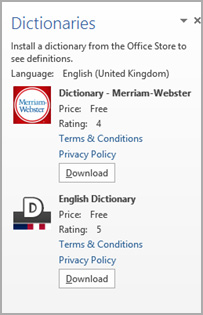
- The grammar-checking functionality is now available in OneNote
- A new definitions feature–available in 22 languages–lets you check the meaning of a word as part of the Proofing Pane. Dictionaries for this feature can be quickly and easily installed–free of charge[1]–from the Office Store
Proofing in additional languages
Research carried out by our planning teams has shown that up to 45% of Office users regularly read or create content in a second or further language, often English for people who do not speak English as their first language. For these users we need to make it as easy as possible to find and use the proofing tools in each language they speak and not just their first language.
In Office 2010 we already include the proofing tools for two or more “companion” languages with each language version. The English version of Office, for instance, includes all the proofing tools for French and Spanish. This feature will continue in the new Office, but we are going beyond it to introduce a completely new approach to proofing in multiple languages. The range of language combinations users may need is almost limitless: a company in Germany may need Greek to do business with customers or partners, a family in the US with relatives originally from Italy may want to send mail in Italian as well as English. To help all these users, we are introducing enhanced functionality to our existing Language Auto-Detect feature.
Imagine that you have an English version of the new Office installed on your PC, but want to write a document in Portuguese. As you start typing your content in Portuguese, Language Auto-Detect will now recognize that you are writing in Portuguese and that you don’t currently have the Portuguese proofing tools installed. A pop-up message appears inviting you to download complimentary proofing tools for that language. Minutes later, you can continue writing with full support to check your spelling and enrich all your Portuguese documents.

This new approach to proofing was introduced for the Consumer Preview of the new Office in summer 2012 and is available now in 50 languages. Already, more than 700,000 users have downloaded proofing tools for additional languages; if you are using the Consumer Preview, why not visit the Office Language Options page and try them yourself?
Tell us what you think
We hope you like the changes we have made in our support for international users and multiple languages in the new Office. If you have suggestions for further improvements or would like to hear more about language-related topics, please let us know in the comments below!
—Julian Parish
[1] Internet access required, fees may apply.
